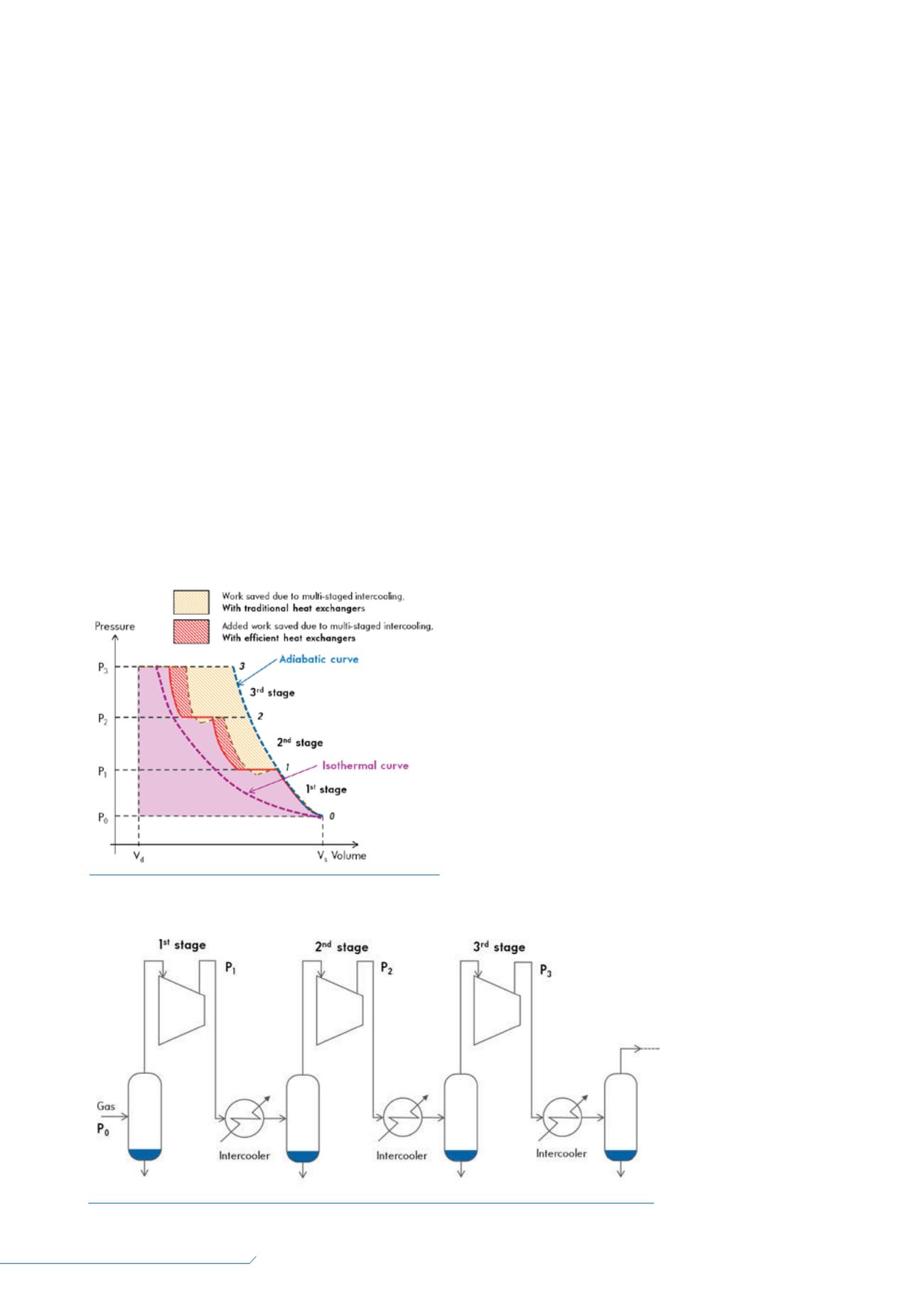
68
LNG
INDUSTRY
MARCH
2016
Some features are customisable, including the following:
Efficiency: counter-current heat exchanger systems are
designed to minimise resistance to fluid flow through
the exchanger and maximise the heat transfer surface
area between streams. This can help to reduce OPEX by
decreasing energy consumption and increasing process
efficiency.
Compactness: BSSHXs are capable of being reduced
in both size and weight. This can make them useful in
offshore applications, where lighter weight can result in
reduced CAPEX.
Availability: PFHEs are known to be robust and easy to
repair and maintain if they are used in adequate operating
conditions. Moreover, high temperature gradients and
high pressure loads can be managed within this brazed
PFHE structure. Suitable material can also be used to
improve corrosion resistance.
Competitive price: heat exchangers are completely brazed
in one piece in a dedicated vacuum furnace. Brazing is
not a restrictive assembling process, and is considered
as smooth and flexible. As a consequence, complex
configurations, including many different components
(bars, fins, parting sheets), which vary in thickness (from
0.1 mm to 20 mm), can be brazed all together in order to
become a one-piece core. The right quantity of material is
then used to produce an optimised heat exchanger at the
best cost.
Gas compression system: an
omnipresent process
Gas compression systems are widely used in many industrial
plants (natural gas processing plants, petrochemical and
chemical plants, end-product gases, etc.), where higher
pressures and lower volumes of gas are sought.
The design of a gas compression package is imposed by
the project development philosophy of the field. It has to
cover a large range of operating conditions and
accommodate a combination of different process conditions
(variable suction pressure, varying mass flow, highest
discharge pressure, etc.). These often require the system to
have several stages of compression, which can usually be
provided with intercooler exchangers.
Multi-staged unit with intercoolers principle
The gas enters the first compressor (P
0
) and then exits at the
first pressure level (P
1
). Inevitably, the temperature will also
increase. The gas is then cooled down in the intercooler, in
order to achieve a suitable temperature level for the next
compression stage. Condensed liquid is constantly removed
from the gas stream prior to each compression stage, using
a free water knock-out drum. The gas phase enters a new
compression stage and the process starts again.
The influence of design parameters
In general, both technical and financial considerations impact
the intercooler choice, especially in an offshore application.
Inevitably, an intercooler exchanger has to fit the process
functioning specifications, which can include different operating
conditions. The heat exchanger design is then optimised
according to various parameters, e.g. safety, expected thermal
performance, pressure drop requirements, weight, size, etc.
However, the main decision on any project is how to
achieve the best balance between CAPEX and OPEX. This
impacts the entire plant configuration, including the design of
the heat exchangers. The most cost-effective option has to be
picked among different competing alternatives, which could
have different initial costs, operating costs, maintenance
costs, and possibly different life cycles. For example, in
offshore applications, the weight of the topside plant affects
the overall economics of
the project. Indeed,
minimising the total
weight of the topside
structure heavily impacts
the supporting structure,
which could represent half
of the total price of the
system (FLNG, FPSO, etc.).
Thus, maximising the
efficiency of the system
would lead to energy
consumption minimisation
during operation, which
would maximise revenue.
Therefore, engineers
have to find the best
Figure 2.
Multi-staged gas compression system principle.
Figure 1.
Pressure-volume compression diagram for
traditional and compact heat exchanger technologies.


